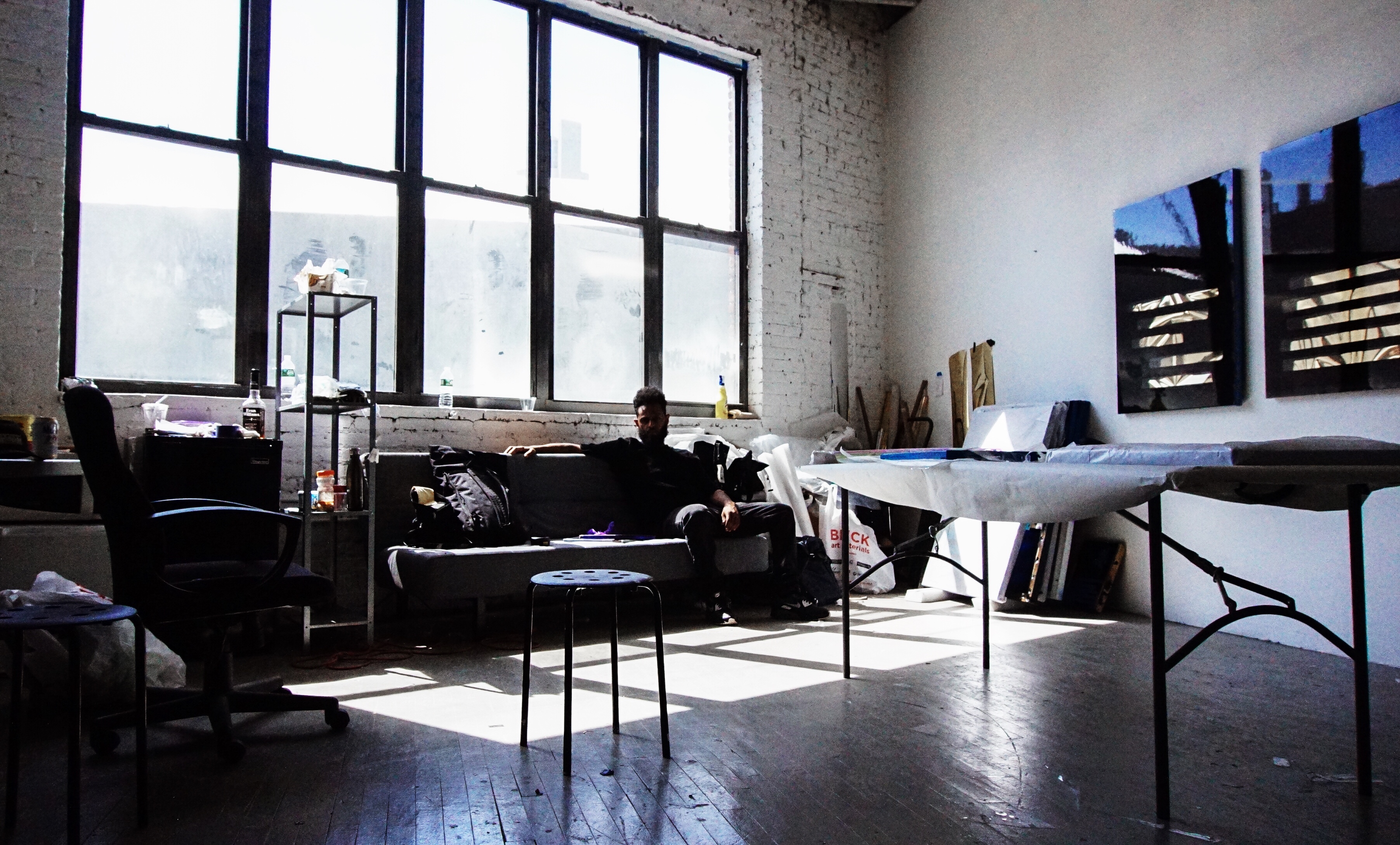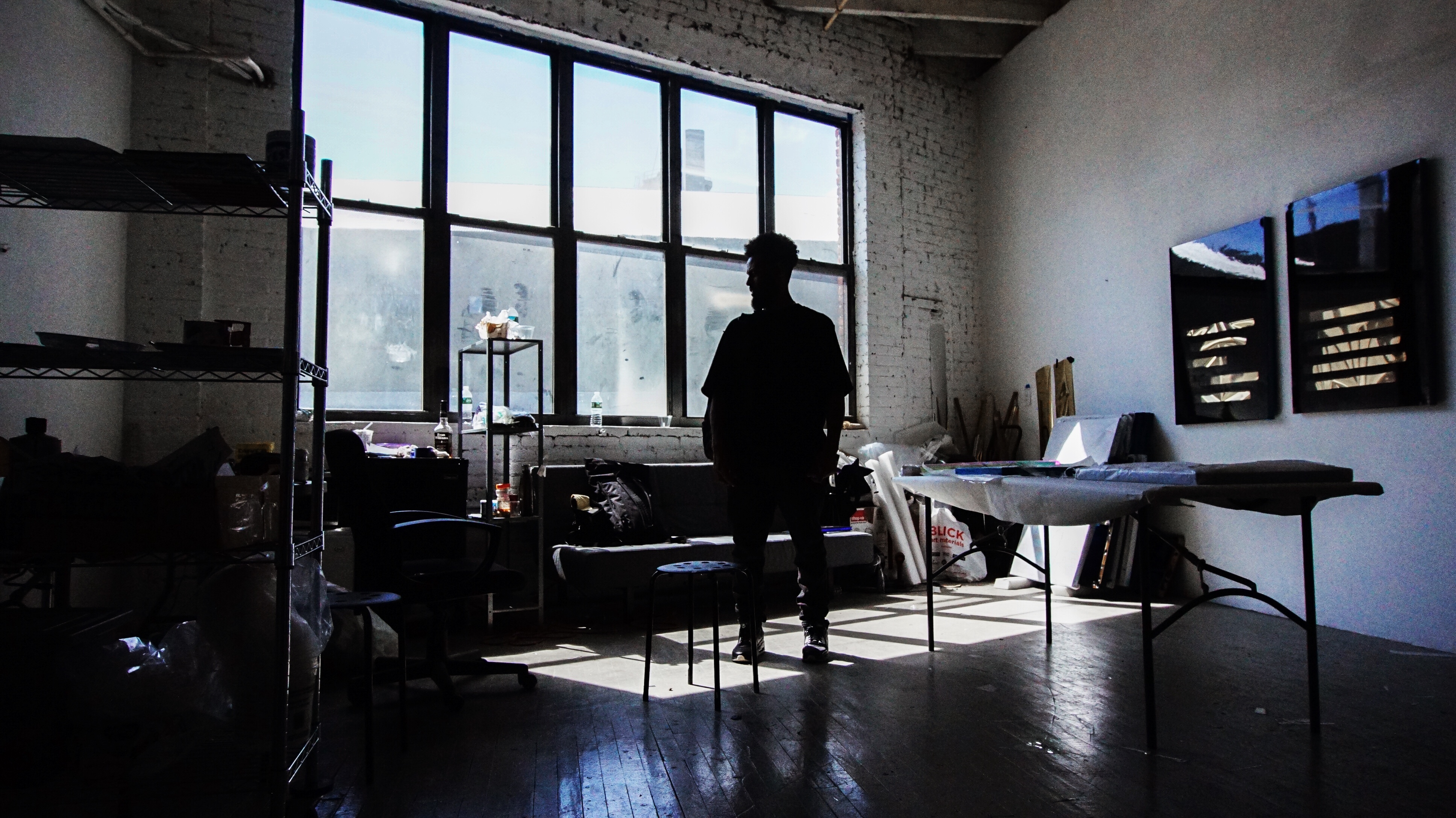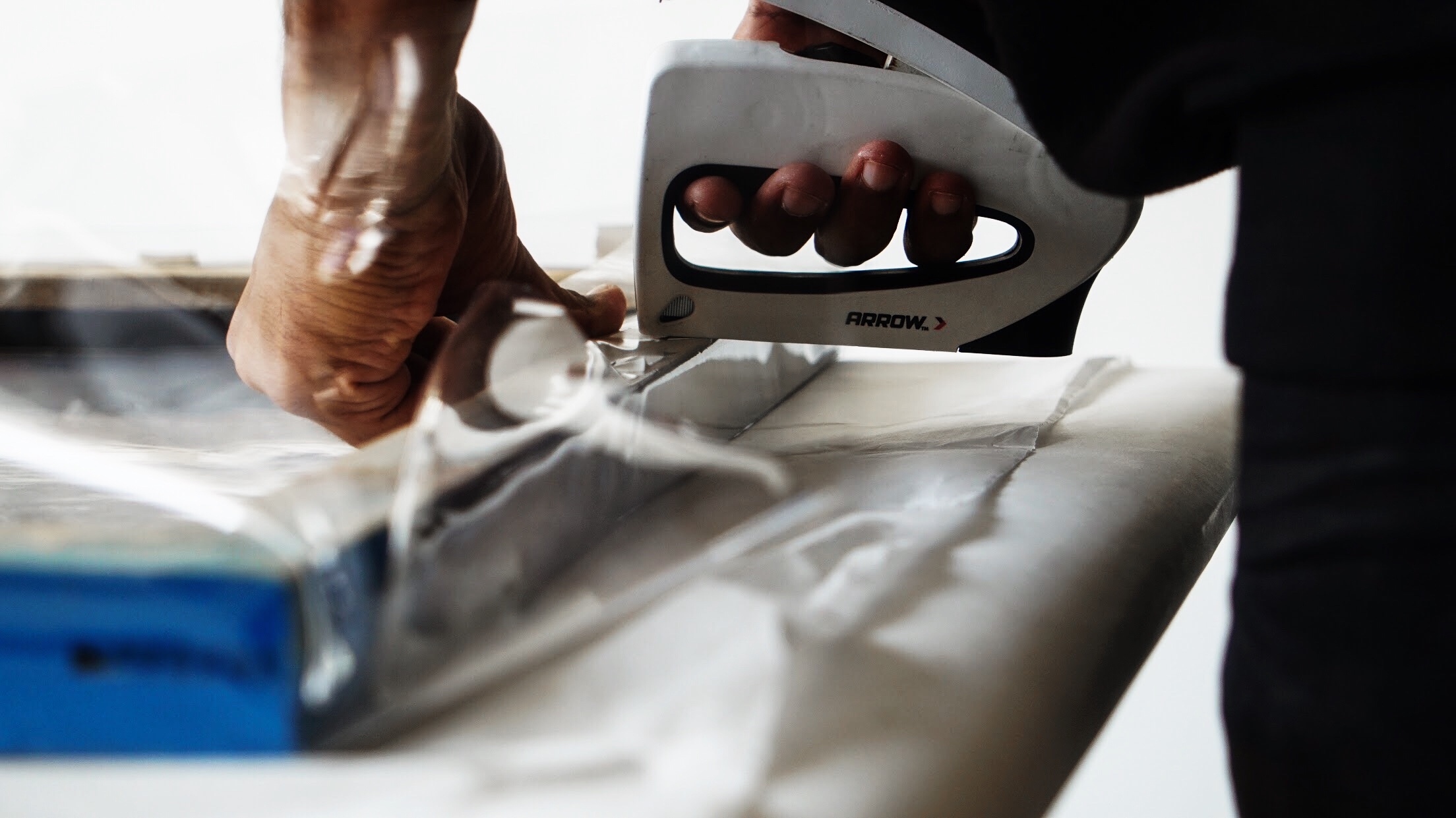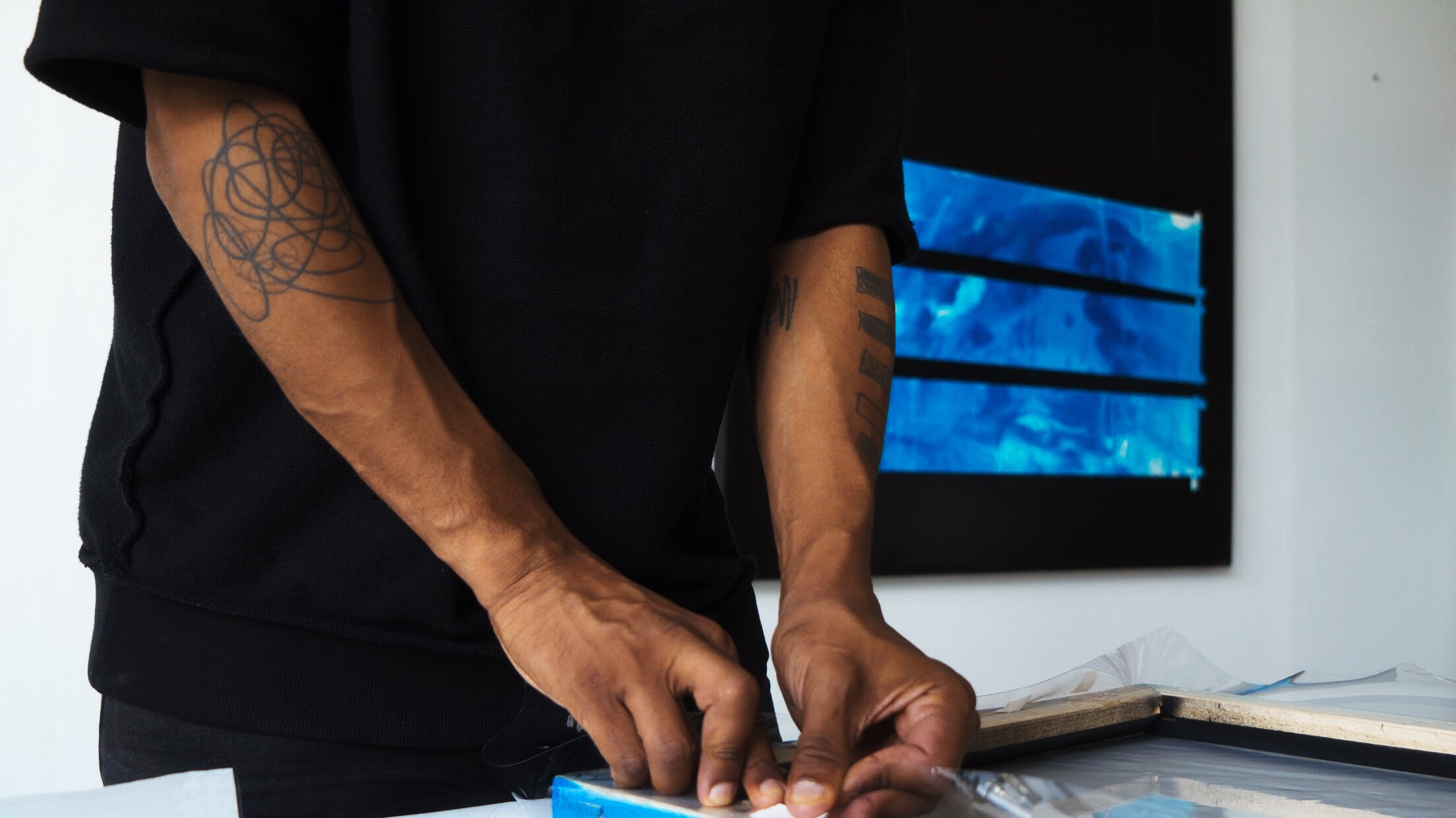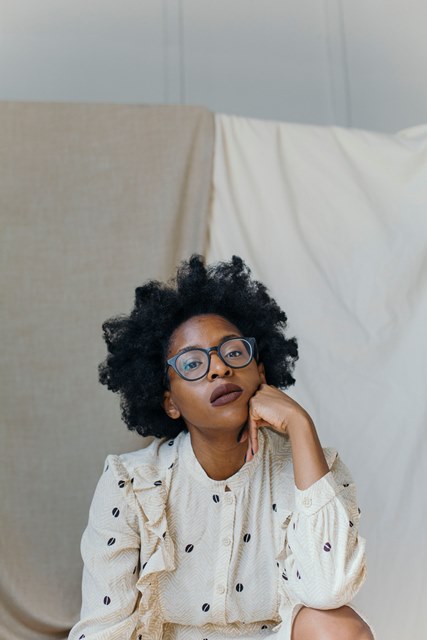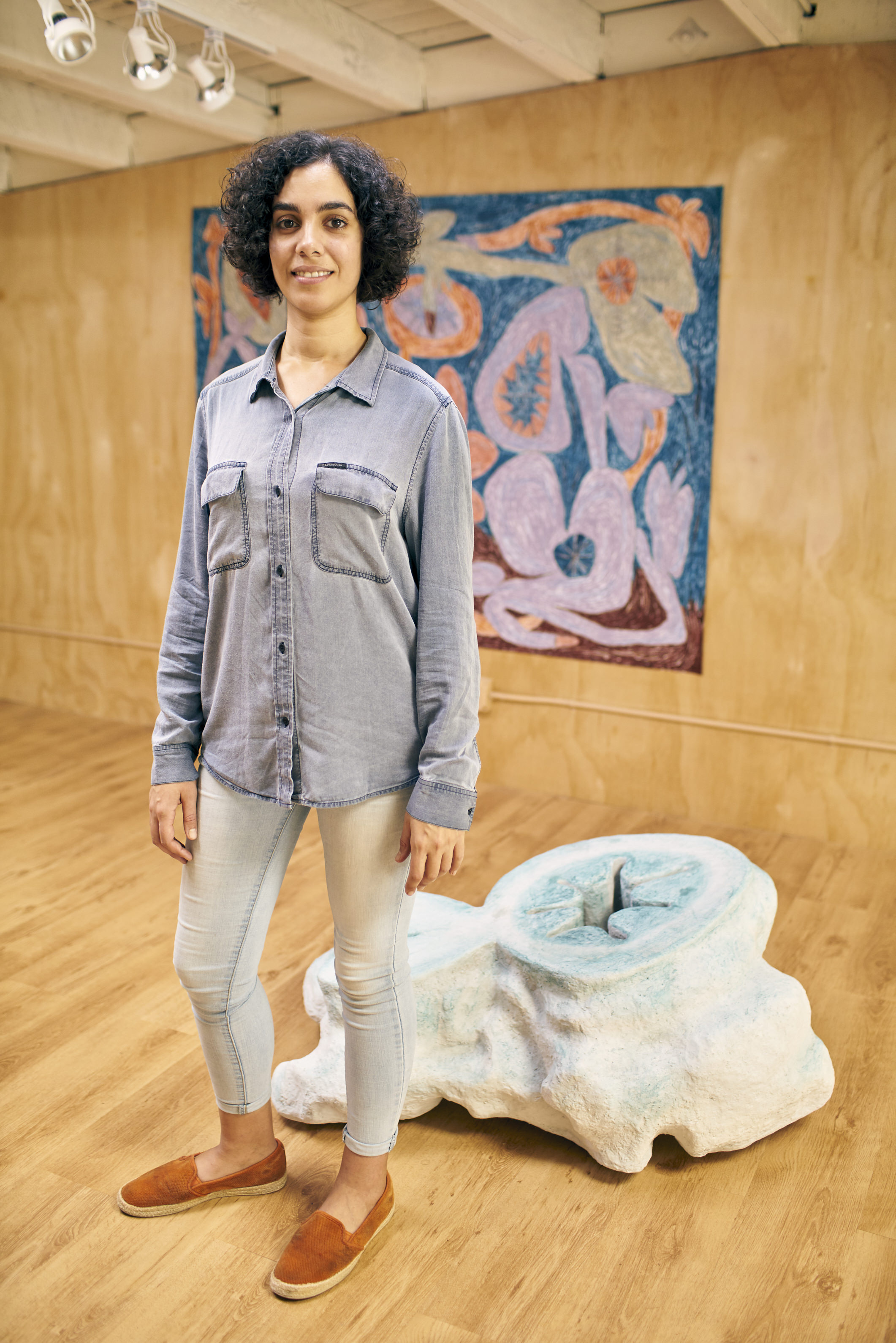Tariku Shiferaw is an Ethiopian born artist who explores the nature of societal structures through painting and mark-making. He utilizes Hip-Hop, R&B, Jazz, Blues, and Reggae song titles as a kind of point of reference to real life stories, and emphasizing the everyday struggle of the Black artist, and their since of place. Shiferaw uses pattern to not just develop a specific aesthetic, but to represent Black bodies and how they inhabit a distinct space. Shiferaw was raised in Los Angeles, and has earned a BFA from the University of Southern California, and a MFA from Parsons School of Design.
AMMO: What’s Your AMMO?
Tariku Shiferaw: Everyday life, culture, music (hip-hop, R&B, Blues, Jazz, Reggae), paintings, art, racism, love, hatred, discrimination, other artists who’ve walked the same path before me (Jack Whitten, David Hammons, Romare Bearden), Blackness, rhythm (making paintings is similar to making music. There has to be a flow in thought-process and in making), my peers (other amazing artists around me, too many to mention), writers (Fred Moten, Ta-Nehisi Coates, James Baldwin, Frantz Fanon, Octavia Butler, Claudia Rankine, Maya Angelou, Toni Morrison)
A: This issue relates art and spoken word in that visual art can be a type of “unspoken” word. Do you hope the viewers of your work pull some type of “unspoken” word via the use of mark-making?
TS: Words and images do interchange depending on the context, both become stronger with the support of the other. Do I “hope”? No, the viewer will get whatever they want to get out of it. My hopes and worries for the viewer doesn’t dictate the work I make. However, images do tend to stand-in for words. I find the best results to be when the two are combined. In my practice, I use music titles to contextualize my abstract paintings and sculptures. I use music by Black artists to add to my paintings another layer of context. Titling the works with music titles marks the work. It also creates another layer of mark-making within my work.
A: You mentioned the catalyst for the use of hip-hop lyrics to title your work was an interracial experience you had while in school at USC. An experience we all know too well. Do you believe that that purpose of this; the introduction of you before people see you; has been made clear?
TS: This interracial experience is one of many. I’ve encountered similar situations in different parts of my life. It was much easier to ignore and move on when I was a teenager and positively naïve. However, experiencing it as an adult hurts much more. It’s dehumanizing. When I first decided to work on my current body of work, “One of These Black Boys,” was immediately after a traumatic experience of racial discrimination in Bushwick, which is a Brooklyn neighborhood that has rapidly been gentrified.
A: You’ve exhibited your work nationally and internationally. Do you find the response varies and what are some examples?
TS: Yes, it slightly varies. During my solo exhibition titled “Erase Me” with Addis Fine Art in London, U.K. many inquired deeply regarding “One Of These Black Boys.” The questions of the Black Brits was an attempt to understand and relate to their personal experience, which led me to suspect their struggles in the U.K is slightly different than ours in the U.S. Every culture deals with race issues at different capacity. Nonetheless, the conversations and responses surrounding my work was accepted and understood by most people I encountered.
A: Blackness in the art world has slowly made a shift. As we charge forward in the fight for more inclusion, as an artist yourself, where do you see the most room for improvement?
TS: Yes, there have been great changes compared to the times where Black artists used to be purposely exclude from major art institutions. The biggest struggle is having art-professionals of color, particularly Black, in positions where major decisions are made, such as chief curators and directors of galleries and museums. Although in 2018, we’ve seen a number of Black art-professionals attain such positions; yet, there is a long way to go. Artists Luis Jacob and Viet Le contextualized it best in metaphorically describing how the art world operates: If artists represent the front-room of the institution, then curators and directors represent the back-room, where all the decisions are made. It may be trendy to present Black artists now, but what happens when it’s no longer a trend in the near future? Do museums and galleries go back to representing predominantly white artists only? This happened back in the 1990’s, where identity art was a trend, then quickly shifted back to mostly showing white artists.
A: Do you believe Black spaces can ever be created in isolation from the influence of generational oppression and trauma?
TS: Given the history of the United States, no. One cannot isolate the traumatic oppression that has taken place and is still taking place. It’s a wound that cannot heal because it’s constantly re-afflicted by the systemic racism that is strategically placed to keep Black people and other minority groups at a disadvantage.
A: Your piece “King Kunta” exudes a feeling of reclaiming or re-purposing. Would you see Black culture in America as a re-purposing of what is available to us, when compared to Black culture in Africa? Or is there very much a similarity?
TS: All of my pieces do just that, they reclaim spaces and attempt to rewrite history. They erase in order to be etched into the cannon of western art history. Now, the piece “King Kunta (Kendrick Lamar)” is the most complex piece out of all my works. It references the Blues, Hip-hop, Alex Haley’s novel The Roots – regarding the character Kunta Kinte, and the ‘hood’ – where Kendrick Lamar grew up in (which is a similar neighborhood to where I grew up in LA). The piece (black plastic with blue spray paint) drapes down like a king’s robe, confidentially holding its respected space. Kendrick refers to himself as king of his hood and that no one can stop him from succeeding and living free, which mimics the goals of Kunta Kinte – to live free or die trying. Through presenting this present-day struggle, this track emulates the exact context of how songs during the Blues’ era were created – providing evidence that hip-hop is the present-day (reincarnated) Blues. Considering all of these references, this piece becomes one of the most multilayered pieces I’ve made. Yet, it’s such a, physically, minimal piece. Black culture in America, according to my perception, does not re-purpose. It creates. It creates out of the experience of the struggle such beautiful noise like the Blues, Jazz, Hip-hop, and many things other than music. Now it is hard to compare Black Culture in the United States to Africa, considering Africa is not a nation but a continent. There are over 50 nations in Africa and all have had different histories with white colonialists. There are many Black cultures in Africa. I can respond to the nation I’m most familiar with, Ethiopia. It’s predominantly Black. All the officials that hold power in government are Black. So, Blackness is not an issue. However, there are bigger issues with tribal and class inequality. There is no contrast like there is in the U.S with Black and white, so the struggle lives elsewhere. The one similarity I can think of is human rights issues, but we can say this about many countries in the world.
A: Do you believe there is a responsibility of a Black artist? If so, what do you believe this responsibility is?
TS: I believe there is a responsibility for all visual artists. Artists are supposed to be critical thinkers who bring social constructs to question. Within this context, yes, every Black artist has a responsibility in our society. It is to question and not blindly accept the social norm.
Tariku is currently showing in a group show titled In Plain Sight/Site at ArtSpace in New Haven, CT.
All Images by Nagil Johnson at the artists studio in NY.



